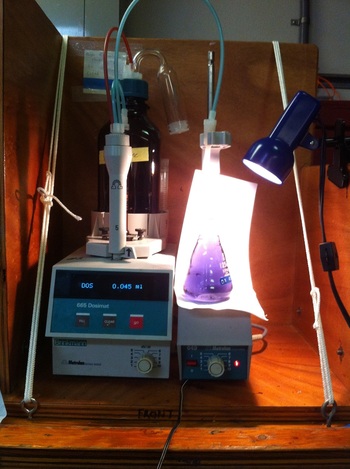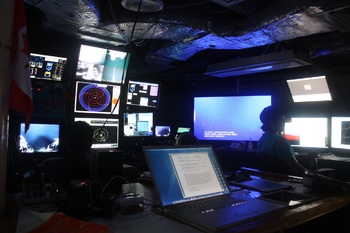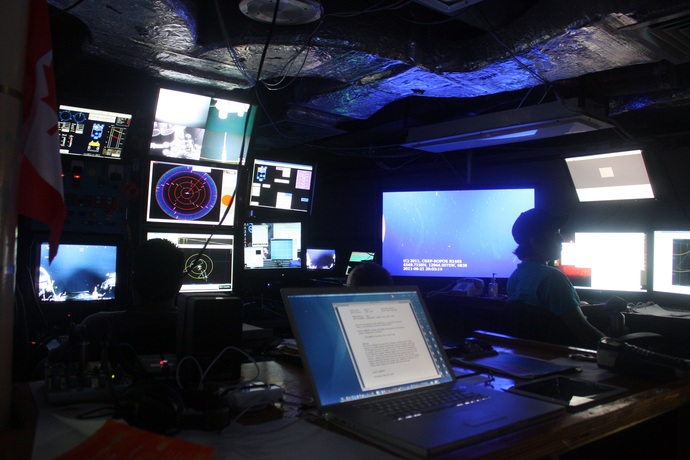During the transit from Newport-Axial Seamount, I kept myself busy reading papers on lava morphologies of the area we’re headed to, and helping out in the wet lab. On Saturday early morning, a CTD cast and several water samples were taken. After a thorough refresher course on oxygen titrations, I spent a few hours late last night helping Orest Kawka analyze his water samples.
I woke up this morning and we had made it to Axial Seamount! My first watched for the ROPOS ROV started soon after the Slocum AUV was deployed. My watch, unfortunately, covered four hours of moving at about 900 meters depth. Luckily though, this gave me several opportunities to see beautiful jellyfish and even a squid. Now, the ROV is on the seafloor, tracking the location of the cable that was recently placed for the observatory.
Since the RSN team has been out here last, Axial erupted, covering portions of the caldera with thick lava. Everybody is eager to see the changes this has had on the region, and how this will affect plans for future node placement. I’m hoping to utilize the new data we collect to make a geological map of potential node sites to help determine the safest, yet most interesting, site for instrument placement.





